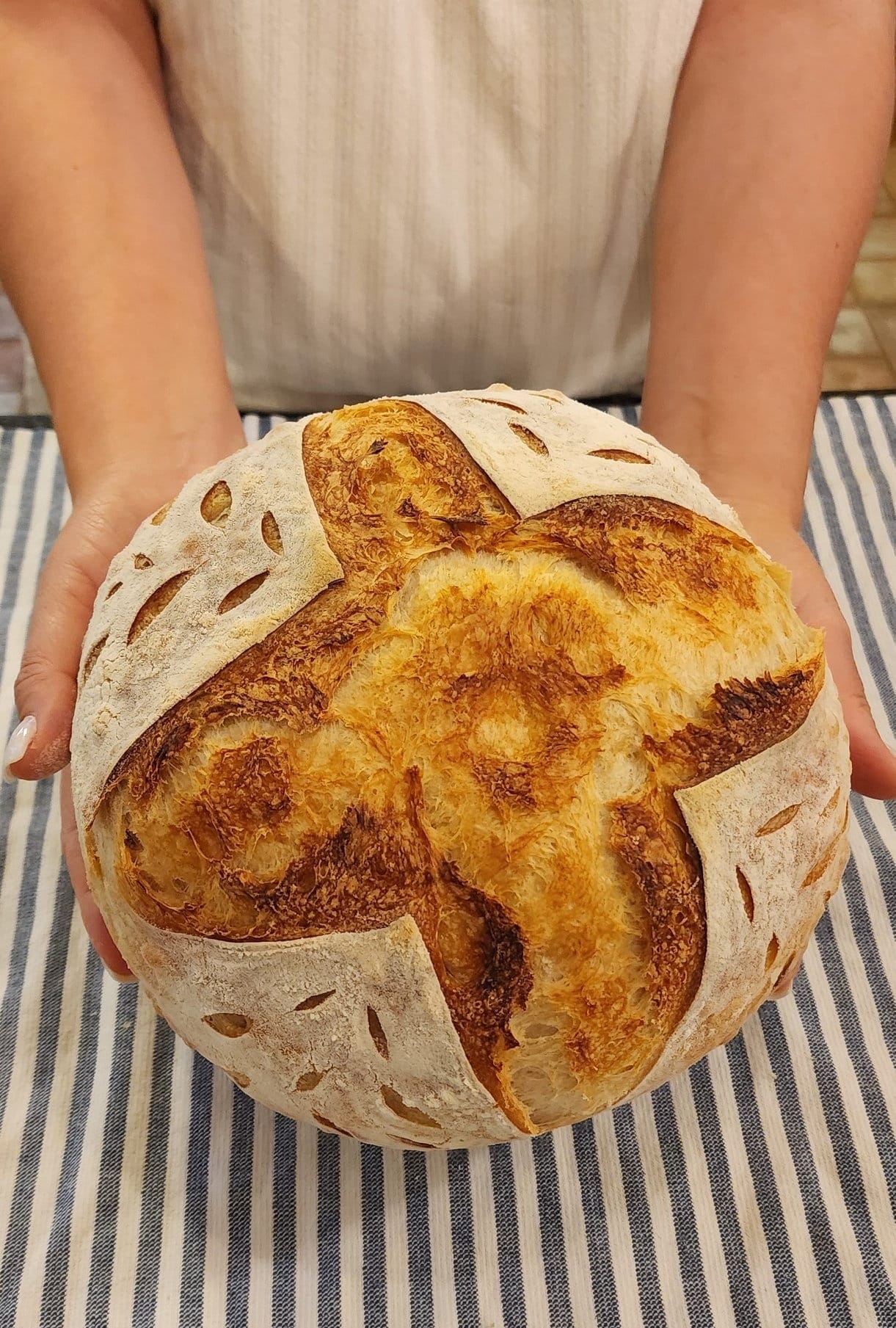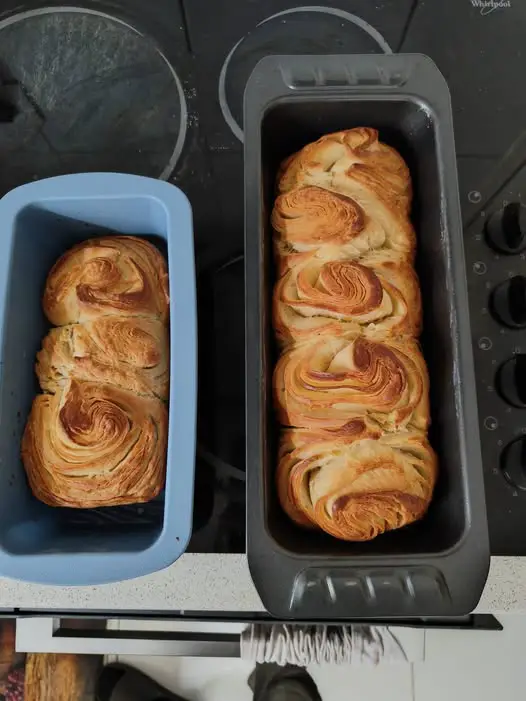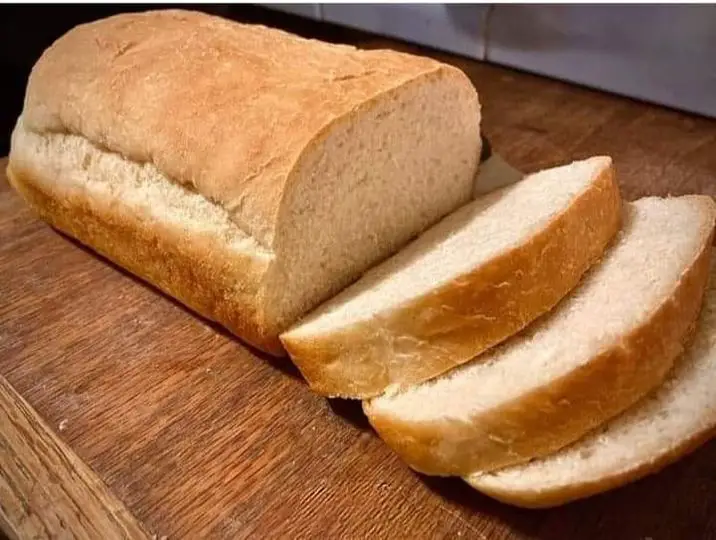sourdough bread
Description:
This Sourdough Bread recipe is made with a natural sourdough starter, yielding a crusty, flavorful loaf with a chewy interior. The recipe involves a slow fermentation process that enhances the depth of flavor and provides the characteristic tang of sourdough. Perfect for sandwiches, toasting, or enjoying with butter!
Ingredients:
For the Dough:
- 1 cup (240g) active sourdough starter (fed and bubbly)
- 1 1/4 cups (300ml) water, room temperature
- 3 cups (360g) bread flour (or all-purpose flour)
- 1 teaspoon salt
For Feeding the Starter:
- 1/4 cup (60g) flour (any type)
- 1/4 cup (60ml) water
Instructions:
1. Prepare the Starter:
- If your sourdough starter has been in the fridge, take it out and feed it with equal parts flour and water. Let it sit at room temperature until it becomes bubbly and active (this may take 4-6 hours or overnight).
2. Mix the Dough:
- In a large mixing bowl, combine the active sourdough starter and water. Stir until well mixed.
- Add the flour and salt to the mixture and stir with a wooden spoon until it forms a sticky dough. No need to knead—just mix until the ingredients are combined.
3. Rest the Dough (Autolyse):
- Cover the bowl with a damp cloth or plastic wrap and let the dough rest for 30 minutes. This helps the flour hydrate and improves the dough’s texture.
4. Stretch and Fold:
- After the rest, perform a series of “stretch and folds.” To do this, wet your hands, grab one side of the dough, stretch it upwards, and fold it over the center. Turn the bowl and repeat this process 4-6 times. This helps build gluten strength.
- Let the dough rest again for 30 minutes and repeat the stretch and fold process 2-3 more times over the course of 1.5 hours.
5. Bulk Fermentation:
- After the stretch and fold process, cover the dough and let it ferment at room temperature for 6-8 hours, or until it has doubled in size. For a stronger sourdough flavor, you can refrigerate the dough overnight.
6. Shape the Dough:
- Once the dough has finished fermenting, turn it onto a lightly floured surface. Shape it into a round loaf by gently folding the edges toward the center. Let the dough rest for 15-20 minutes.
- After resting, shape it into a tighter ball by tucking the sides under. Place the dough, seam side up, in a well-floured proofing basket or bowl lined with a cloth.
7. Final Proof:
- Cover the dough and let it proof for 2-4 hours at room temperature or place it in the fridge for an overnight cold proof, which will develop more flavor.
8. Preheat the Oven:
- Preheat your oven to 450°F (230°C). If using a Dutch oven, place it in the oven while preheating to heat up as well.
9. Bake the Bread:
- Once the dough is proofed, carefully transfer it to a piece of parchment paper. Slash the top of the dough with a sharp knife or bread lame to allow it to expand.
- Carefully place the dough into the preheated Dutch oven (or on a baking sheet). Cover with the lid and bake for 20 minutes. Then, remove the lid and bake for an additional 20-25 minutes until the crust is deep golden brown.
10. Cool and Serve:
- Remove the bread from the oven and transfer it to a wire rack. Let it cool completely before slicing to allow the crumb to set.
Total Time:
- Preparation Time: 30 minutes (active)
- Fermentation and Proofing: 8-12 hours
- Baking Time: 45 minutes
- Total Time: 9-13 hours (mostly inactive)
Nutritional Information (per slice, based on 12 slices):
- Calories: 130
- Total Fat: 0g
- Saturated Fat: 0g
- Cholesterol: 0mg
- Sodium: 200mg
- Total Carbohydrates: 28g
- Fiber: 1g
- Sugars: 0g
- Protein: 4g
Notes:
- Sourdough Starter: Make sure your starter is active and bubbly before using it in the dough for the best results. You can feed your starter 4-6 hours before making the dough or the night before.
- Dutch Oven: Using a Dutch oven creates steam, which helps develop a crispy crust. If you don’t have a Dutch oven, you can use a baking sheet and place a shallow pan of water in the oven to create steam.
- Flavor Development: For a stronger sour flavor, you can refrigerate the dough during the bulk fermentation or final proofing stage.
This Easy Sourdough Bread recipe is perfect for beginners and experienced bakers alike. With its crisp crust and soft, tangy interior, it’s a versatile bread that can be enjoyed in a variety of ways!






